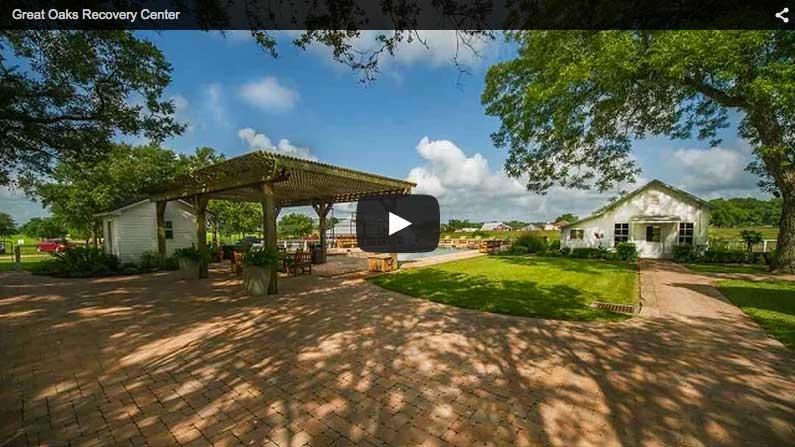Suicide remains a leading cause of death in the U.S., particularly among youth and young adults. Though recent data shows a decline in suicidal ideation—from nearly 13% in 2021 to 10% in 2024—and in attempts among teens—from 3.6% to 2.7%—suicide tragically still ranks as the second leading cause of death for ages 12–17. In Texas, teen suicide is a concern, but there’s also a great risk among adults, as the suicide rate has increased nearly 30% in 20 years.
Throughout the entire month of September, the Substance Abuse and Mental Health Services Administration (SAMHSA) provides valuable information through Suicide Prevention Awareness Month as a way to recognize “the warning signs for suicide, encouraging open conversations about mental health, and connecting people to proven treatment and resources.”
Why Does Suicide Prevention Awareness Matter?
People may consider or attempt suicide due to a combination of biological, environmental, psychological, and social factors:
- Mental health conditions—such as depression, anxiety, bipolar disorder, and schizophrenia—are strongly linked to suicidal ideation. These conditions can distort thinking, increase hopelessness, and reduce coping ability.
- Substance use disorders—often co-occurring with mental illness in what’s known as a dual diagnosis—heighten suicide risk by impairing judgment and intensifying emotional pain.
- Past trauma, abuse, or chronic pain can lead to persistent emotional distress and suicidal thoughts.
- Environmental and situational stressors sometimes trigger suicidal crises, too, especially if someone feels they’re without social support or options in situations such as:
- Death of a loved one
- Financial hardship
- Relationship breakdowns
- Job loss
- Discrimination
Limited or stigmatized access to mental health care compounds these risks.
What Warning Signs to Watch For
Being able to recognize signs of distress is one of the most compassionate acts we can offer.
Adults
Look for shifts such as deepening withdrawal, change in sleep or appetite, increased substance use, sudden mood swings, like irritability or unexpected calm after depression, talk of feeling worthless or trapped, and giving away prized possessions. Physical pain or chronic illness paired with hopelessness may also indicate risk.
Youth
Teens often show distress differently—be alert to sudden disengagement from friends or activities, decline in school performance, frequent complaints of aches or fatigue, disproportionate anger or “acting out,” risk-taking behaviors, or dramatic changes in appearance. Phrases such as “I can’t go on” or expressions of being a burden should trigger immediate care.
Compassionate, accessible support systems are essential for prevention. Through Suicide Prevention Awareness Month, you or a loved one can connect more easily with critical resources.
Key Initiatives During Suicide Prevention Awareness Month
SAMSHA offers a structured toolkit of information that’s easy to share and encourages deeper engagement:
- Sept 1–5: Understanding Risk: Embracing Treatment, Hope, and Resilience
The program starts by acknowledging suicide’s complexity, promoting evidence-based treatment, and reinforcing that recovery and resilience are possible. - Sept 8–12: Building Community Partnerships and Supports
The focus shifts outward: leveraging peer-led efforts and local networks to lower stigma and enhance belonging. - Sept 15–19: Improving Care and Outcomes for People at Risk
This week calls for action: ensuring accessible pathways to care, safety planning, continued support, and promoting self-care habits. - Sept 22–30: Promoting Dignity Through Connection
Stories from people with lived experiences build trust, reduce isolation, and remind us that every simple connection—a check-in, a shared story, a heartfelt message—tips the scales toward hope.
This effort is more than symbolism—it’s a lived practice. When we move from awareness to action, when we pair our shared tools with our shared humanity, when we champion dignity through connection—we transform fleeting hope into living lifelines. Together—in strength, with purpose—we have the power to save lives.
Crucial Hotlines to Find Help
These resources are free, confidential, and staffed with understanding people who can help.
- 988 Suicide and Crisis Lifeline: Available to everyone 24/7. Call or text 988, or use the online chat function.
- Copline: Available to current and former law enforcement personnel and their families 24/7. Call 1-800-COPLINE (267-5463).
- Fire/EMS Helpline: Available to firefighters, EMTs, rescue personnel, and their families 24/7. Call 1-888-731-FIRE (3473).
- LGBT National Hotline: Available to all members of the LGBTQIA+2s community, including youth, adults, and seniors, Monday–Saturday during specific hours. Call 888-843-4564 for the primary hotline or visit the website for other options.
- NAMI Helpline. Available to everyone in need of one-on-one emotional support, mental health information, and resources needed to tackle tough challenges, Monday–Friday 10:00 a.m.–10:00 p.m. EST. Call 1-800-950-NAMI (6264) or text ‘NAMI’ to 62640.
- National Domestic Violence Hotline: Available to everyone 24/7. Call 1-800-799-SAFE (7233), or text ‘START’ to 88788, or use the online chat function.
- RAINN National Sexual Assault Hotline: Available to everyone 24/7. Call 800-656-HOPE (4673), or text ‘HOPE’ to 64673, or use the online chat function.
- The Trevor Project Crisis Line: Available to LGBTQIA+2s youth 24/7. Call 1-866-488-7386, or text ‘START’ to 678-678, or use the online chat function.
- Veterans Crisis Line: Available to Veterans and their loved ones 24/7. Call 988, then press 1, or text 838255, or use the online chat function. You don’t have to be enrolled in VA benefits or health care to connect with caring, qualified responders.
You’ll also find more essential hotlines and warmlines from Texas Health and Human Services.
Great Oaks: Your Home for Compassionate, Quality Care
At Great Oaks Recovery Center outside of Houston, Texas, we know what you’ve been through—and we want to stress that you matter. If you’re struggling, we can help. Our board-certified medical professionals use a multi-disciplinary approach to treat drug addiction, alcoholism, and dual diagnosis. Reach out to our admissions office today.



